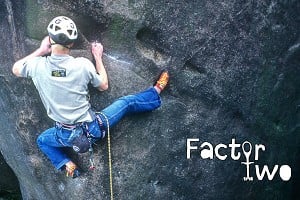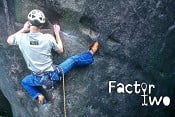In reply to adstapleton:
Stealth paint - the idea is a good one but the application is weak. The kit contains a plastic spoon (that you will only use once and then discard because it's unnecessary), a plastic rod (used for mixing the rubber and adhesive and also for pressing the mixture onto the shoe and making it an even spread), a tin of stealth rubber shavings and a tube of barge polychloroprene cement.
The cement is a common shoe repair cement. Polychloroprene cement is a synthetic rubber adhesive (original trade name is neoprene by DuPont) and cures to a rubber material that won't crack or split. That is mixed with the stealth rubber resulting in a final grade of rubber that is neither stealth nor neoprene. The stealth shavings are a very heavy grade and so the resulting finish on the shoe looks awful and doesn't smooth (feather) at the edges of the repair very well at all. The repairs feel rubbish underfoot on the sole.
So stealth paint is indeed a bad purchase as people suggest, however... The idea is sound and it is something that you could achieve yourself for less cash. I have a pair of la sportiva approach shoes that split in the leather where my awful gait had been sawing at it with the tread of the other foot. I produced some rubber dust and used the cement from my stealth paint kit to make a mixture for covering the repair stitching that I did on the leather. It looks great, protects the stitching well (I doubt my gait has changed since doing it and I cannot see the rubber repair being worn through in the near future and I wear the shoes a lot in town and out and about at crags).
I am now sourcing some cement of my own and am going to produce some climbing grade rubber dust by using a 40 or 60 grit sanding attachment on a die grinder (I'll use an air tool at work, but a dremel or similar or a drill sanding attachment or an orbital sander would do fine also) on an old pair of climbing shoes.
If you want to get yourself some cement then check out this page
http://www.algeos.com/html/products/adhesives/renia.html
or look for some Barge cement (that is the brand in the stealth paint kit and note that you only get a 2oz tube for your money in the kit).
So in recap, do it yourself and be happy or pay through the nose for stealth paint and have an expensive grainy ineffective mess. If you email me I'll gladly send you the instructions that come with stealth paint so you know the process if you think you will have a pop yourself. (if I can't find the instructions then I'll write a description myself)
I'm also going to have a pop at resoling my scarpa force with some vibram xs flash sheet rubber (from here:
http://www.vibram.com/vibramrepair/catalogo.php?id_categoria=21&livello... ) using the same cement. I can't see that it will be that difficult.









